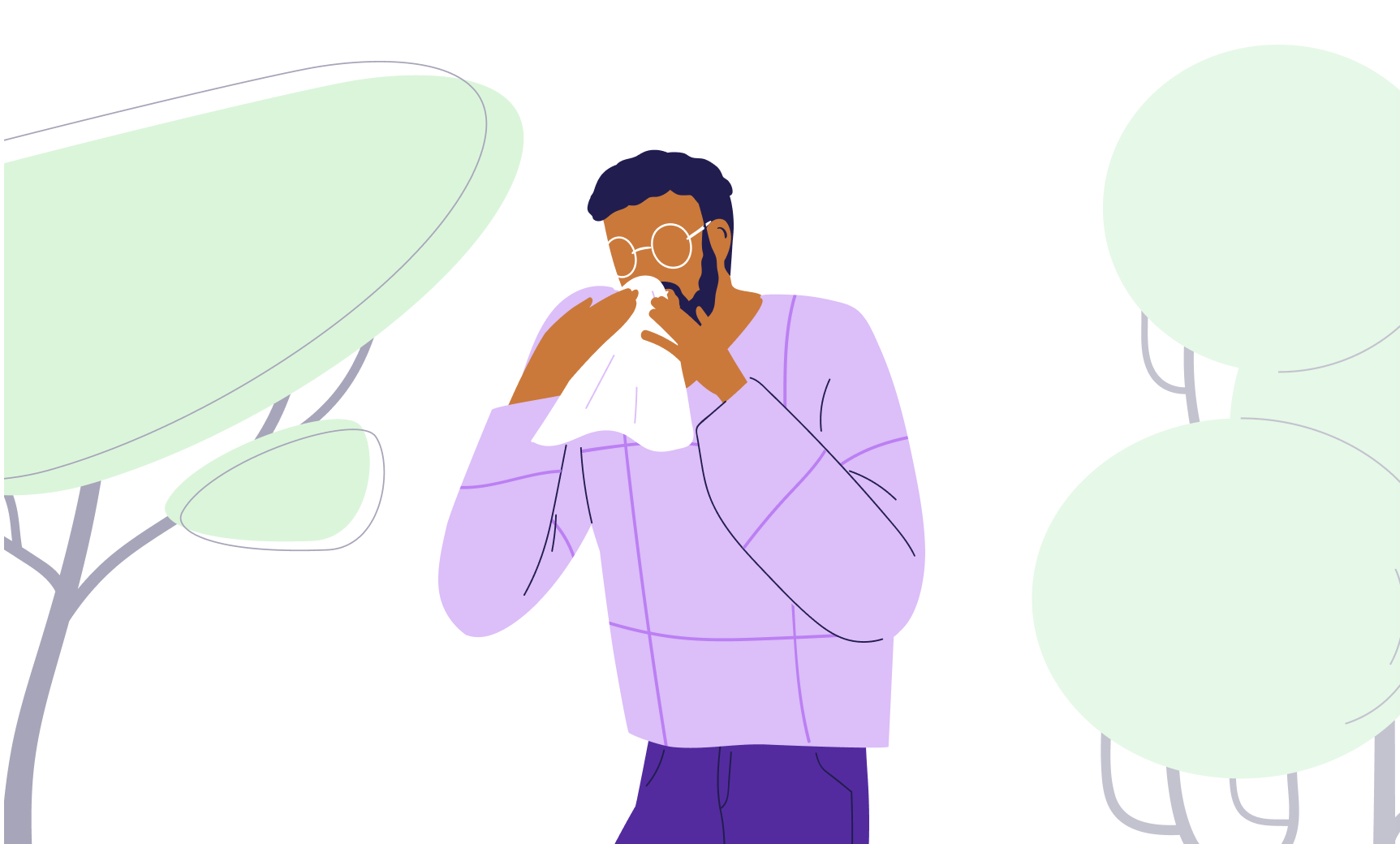
Get a Handle on Fall Allergies
What’s making you itchy, sneezy, and uncomfortable—and how to deal with allergies.
Spring has a reputation for being the prime allergy season. You can practically see the allergens: Flowers are blooming, grasses are growing, trees are releasing pollen. However, fall can be just as bad for allergy sufferers.
Allergies are a hyperactive response from your immune system to a foreign substance, which it misidentifies as a dangerous intruder. The body then generates histamine to fight this “threat,” causing the telltale symptoms of coughing, hives, rashes, sneezing, itchiness, runny nose, sore throat, and even trouble breathing.
One of the top fall allergies is ragweed, a flowering plant which triggers hay fever, the common term for seasonal allergies. The ragweed season begins in mid-August and pollen counts skyrocket by mid-September. According to the Asthma and Allergy Foundation of America, 24 million people in the United States experience hay fever.
If you’re allergic to ragweed, your symptoms may also be triggered by related plants, such as sunflowers, sage, burweed marsh elder, rabbit brush, and mugwort.
Other fall allergy triggers might be mold. Spores are released in lasting warm, humid fall weather or, alternatively, when dry winds pick up. And, though it looks fun, don’t jump into piles of leaves — mold can also grow on the season’s iconic fallen leaves.
If you suspect you have hay fever, talk to an allergist. They can diagnose you with a skin test, which checks if your body reacts to diluted allergen applied to the skin. Allergy tests can be scheduled through LabFinder.
If you’ve pinpointed ragweed as the culprit, eliminating ragweed near your home helps. Ragweed should be killed off in spring or early summer—before the plant gets too large and established and before it flowers. Herbicide or hand-pulling are effective. However, it’s nearly impossible to avoid ragweed pollen entirely. A single ragweed plant can produce a billion grains of pollen each season. This pollen is incredibly light and can be carried hundreds of miles away by the wind, wreaking havoc on allergy sufferers.
An easy option is taking over-the-counter or prescription antihistamines. Starting to take this medication before the ragweed season kicks off can help keep your allergies in check. Antihistamines do not cure allergies but, rather, block or reduce histamines, the chemical that causes allergy symptoms. Antihistamines come in the form of oral pills, eye drops, and nasal sprays.
Over-the-counter nasal sprays may also be an effective way to make it through the fall. Nasal corticosteroids, for example, treat nasal inflammation and congestion. Goodbye, stuffy nose! These are typically safe to use for up to two weeks.
There are also immunotherapy treatments. Allergy shots, for example, contain a tiny amount of the triggering substance and are given to help build immunity over time. The one downside is that the shots have to be given regularly over a long period, sometimes 3 to 5 years. Another option for ragweed allergies is sublingual immunotherapy (SLIT) allergy tablets. These tablets contain miniscule amounts of the allergen and are placed under the tongue to dissolve. Typically, these tablets have to be taken daily and must be taken in advance of ragweed season.
Check pollen counts online or via weather services. Avoid going outside in the midday, when ragweed pollen levels are typically at their highest. Keep your windows closed and consider running a HEPA filter to remove contaminants from the air. After being outside, remove your shoes before entering your home, launder your clothes, and shower. Wash your hands after touching pets that have spent time outdoors, as they may be carrying pollen on their fur. Since you can’t completely avoid flowers, grass and trees (you gotta go outside sometime!), a few simple precautions can at least reduce allergy symptoms.
Have questions about fall allergies? Or are there other topics you think we should cover? Drop us a line at illuminator@labfinder.com.





LabFinder Editorial Team
The LabFinder Editorial Team is behind The Illuminator and The Insider, LabFinder’s consumer and business blogs.
Dr.Robert Segal
Dr. Segal is CEO and co-founder of LabFinder, as well as a board-certified cardiologist. He began practicing medicine in 2002 and has founded several businesses, including Medical Offices of Manhattan and Manhattan Cardiology.